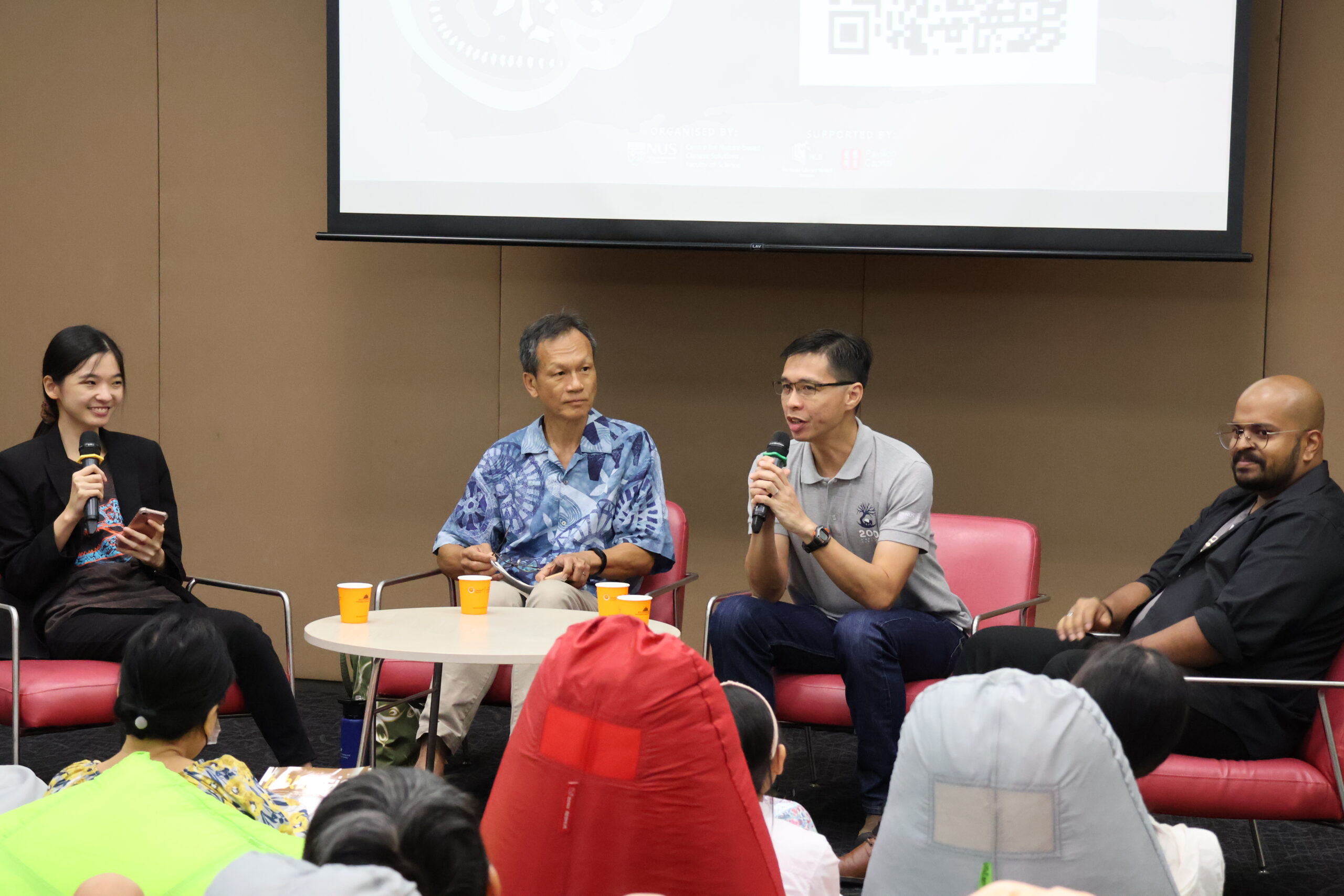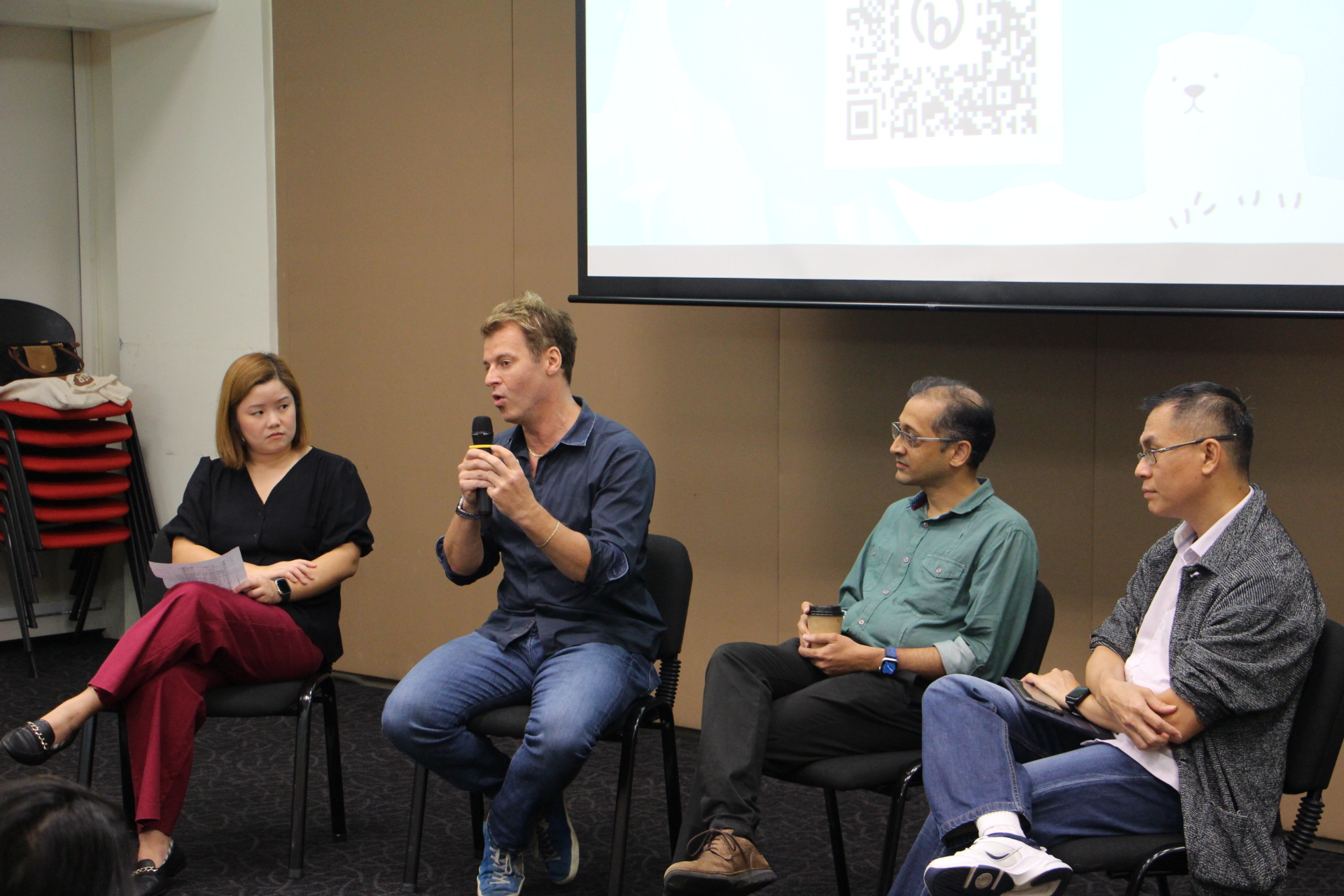Can Hollywood provide insights on climate change and biodiversity loss?

Bringing dinosaurs back to life was an idea welcomed by certain characters in the Jurassic Park movie – until the prehistoric reptiles started wreaking havoc in modern ecosystems that they had not been part of for millions of years.
Similarly, while modern technology could help humans revive animals that have long since disappeared from the face of the Earth, there are many other issues to consider. Hence, instead of reacting to biodiversity loss by genetically engineering lost species back to life, people should take a more proactive stance at conserving biodiversity and preventing wildlife species from going extinct, said experts during a panel discussion on March 26 after a public screening of Jurassic Park organised by the National University of Singapore (NUS) Centre for Nature-based Climate Solutions (CNCS).
Mr Kannan Raja, a teaching assistant at NUS and president of the Herpetological Society of Singapore, who was one of the panellists, said his favourite quote from the movie was when Dr Ian Malcom said, ‘Your scientists were so preoccupied with whether they could, they didn’t think stop to think if they should.’
Another panellist, Associate Professor Darren Yeo, Head of the Lee Kong Chian Natural History Museum at NUS, added that a key consideration in bringing extinct species back to life was knowing where to put them. “If they end up in the zoo, it may be better not to revive them,” he said.
The priority should be given to protecting wildlife from going extinct rather than bringing back extinct species, suggested Ms Annabel Lim, a PhD student at CNCS, who moderated the lively discussion.


The screening of Jurassic Park was the finale of a series of movie screenings, which included Finding Nemo, The Day After Tomorrow and The Lorax, organised by CNCS to raise awareness of environmental issues in support of Earth Hour. Titled The Greatest Shows of Earth, the four screenings were held over two weekends in March at the National Library at Victoria Street with the support of the National Library Board (NLB) and Pavilion Capital, and drew a total crowd of about 200.
In another panel discussion following the screening of The Day After Tomorrow on March 19, the panellists spoke about how the catastrophic weather events in the movie could very well turn into reality if Earth continues to heat up. Sea level rise is a major issue for coastal nations, including Singapore. Professor Benjamin Horton, Director of the Earth Observatory of Singapore, concluded the discussion with a message for all: “There is no vaccine for climate change.”


Fun-filled activities were planned following the screenings of the other two movies.
After the movie Finding Nemo on March 18, Ms Sam Shu Qin, a marine biologist at the NUS Tropical Marine Science Institute, took participants on a “dive” in local waters to help them learn about the marine wildlife in Singapore and how they can do their part to protect them.
At The Lorax screening on March 25, science communicator Kong Man Jing, also known as BiogirlMJ, hosted a game of forest bingo, which gave participants a chance to learn more about the wonders of Singapore’s forests and the myriad of wildlife they contain.
During both activities, participants learned more about how forests and oceans contribute to human well-being, and were encouraged to do their part - no matter how small - to tackle the global crises of climate change and biodiversity loss.
In post-event surveys, participants said they enjoyed the use of popular culture as a hook to learn more about environmental challenges. They also appreciated the fun and cosy setting of the screening room.
Many said they came to value and appreciate nature more than before. One of them commented: “We wished the event had lasted longer! My kids loved it and we had discussions about what we saw and experienced. Thank you!”
This article is contributed by Ms Jelynn Ho, a research assistant from the NUS Centre for Nature-based Climate Solutions (CNCS).
